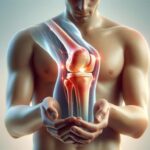Understanding Osteoporosis and Its Growing Impact
Osteoporosis is a progressive bone disease that results in the weakening of bones, making them more susceptible to fractures. As populations age globally, the prevalence of osteoporosis is increasing, particularly among postmenopausal women and older adults. The condition often develops silently, without symptoms, until a fracture occurs, commonly in the hip, spine, or wrist. These fractures can lead to chronic pain, reduced mobility, and a decline in quality of life. The economic and social burden of osteoporosis is substantial, prompting a surge in research and innovation aimed at improving both prevention and treatment strategies. Raising awareness, promoting early diagnosis, and encouraging lifestyle changes are key components in managing osteoporosis effectively.
Advancements in Diagnostics and Early Detection
Timely diagnosis of osteoporosis is critical for preventing fractures and initiating treatment. Traditional methods like bone mineral density (BMD) testing using dual-energy X-ray absorptiometry (DEXA) remain essential, but newer technologies are emerging. These include more precise imaging techniques and biomarkers that can detect bone turnover rates and microarchitecture changes. By 2025, diagnostic tools are expected to become more accessible and accurate, enabling healthcare providers to identify at-risk individuals earlier. Improved screening protocols are being integrated into routine healthcare, especially for those over 50, to guide personalized treatment plans. Early detection not only reduces the risk of fractures but also supports better long-term bone health outcomes.
Emerging Therapeutic Options: More Than Just Slowing Bone Loss
Traditional osteoporosis treatments have focused primarily on slowing bone resorption using medications such as bisphosphonates. While these have been effective in reducing fracture risk, the new generation of therapies is shifting toward promoting bone formation. These anabolic treatments stimulate the activity of osteoblasts—the cells responsible for building bone. Recent developments include:
- Selective estrogen receptor modulators (SERMs) that mimic estrogen’s bone-protective effects
- Parathyroid hormone analogs that actively encourage bone growth
- Sclerostin inhibitors, a newer class of drugs that enhance bone formation and density
These options are offering new hope to individuals who have experienced fractures or who are at high risk. By 2025, combining anti-resorptive and anabolic treatments may represent a more comprehensive approach to managing osteoporosis.
Lifestyle and Nutritional Strategies to Support Bone Health
In addition to pharmacological treatments, lifestyle and nutrition play essential roles in osteoporosis prevention and management. A balanced diet rich in calcium and vitamin D supports bone strength, while regular weight-bearing and resistance exercises help maintain bone density. Key lifestyle recommendations include:
- Consuming dairy products, leafy greens, and fortified foods for calcium intake
- Spending time in sunlight or taking supplements to maintain adequate vitamin D levels
- Engaging in exercises like walking, dancing, and strength training
- Avoiding smoking and limiting alcohol consumption
By adopting these habits early in life and maintaining them into older age, individuals can greatly reduce their risk of developing osteoporosis or experiencing fractures. As public health initiatives increasingly emphasize these preventive measures, the incidence of osteoporosis-related complications may decline significantly by 2025.
Personalized Care and the Role of Technology
Personalized medicine is becoming a cornerstone in the fight against osteoporosis. Advances in genetic research and digital health tools are enabling more tailored treatment plans based on an individual’s risk factors, lifestyle, and genetic profile. Wearable devices and mobile health apps can now monitor activity levels, remind patients to take medications, and track dietary intake. Telehealth is also making it easier for patients to consult with specialists and receive ongoing care without frequent in-person visits. These innovations are helping patients stay engaged in their treatment plans and improving adherence to therapies. Furthermore, artificial intelligence is being employed to predict fracture risk more accurately and to optimize treatment decisions, ensuring that each patient receives the most effective and individualized care possible.
Conclusion: A Promising Outlook for Bone Health
As we approach 2025, the outlook for osteoporosis treatment and prevention is increasingly optimistic. With improved diagnostic tools, advanced therapies that both prevent bone loss and stimulate bone growth, and a greater emphasis on lifestyle and personalized care, individuals affected by osteoporosis have more options than ever before. The integration of technology and innovation into patient care is making it easier to manage the condition proactively. For those at risk or currently living with osteoporosis, staying informed and working closely with healthcare providers can lead to stronger bones, fewer fractures, and a better quality of life in the years to come.








